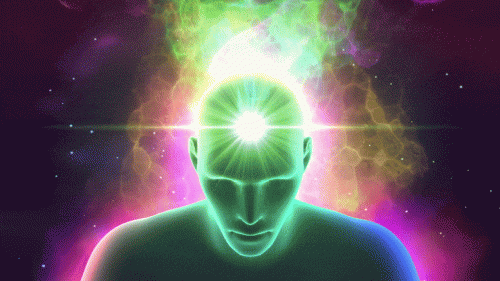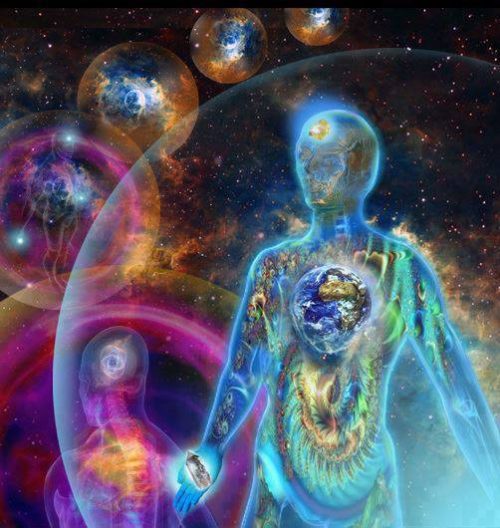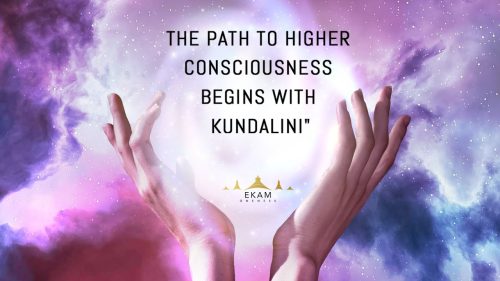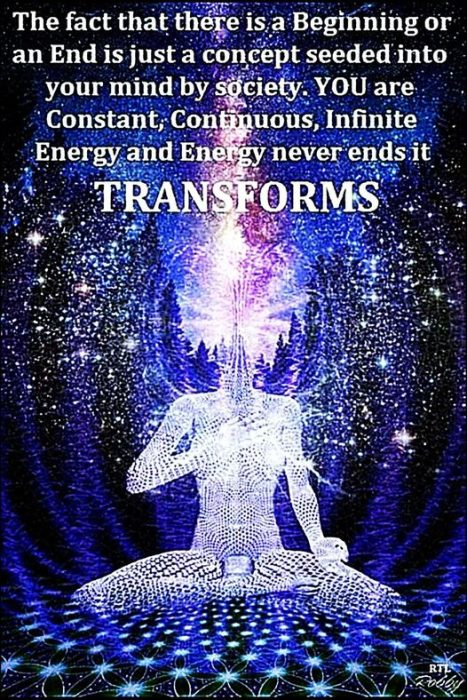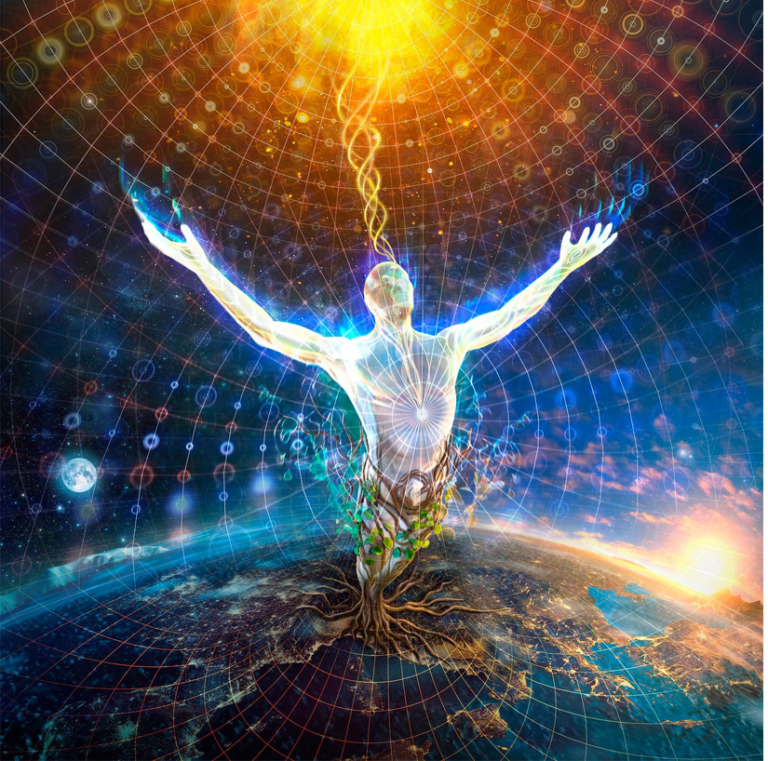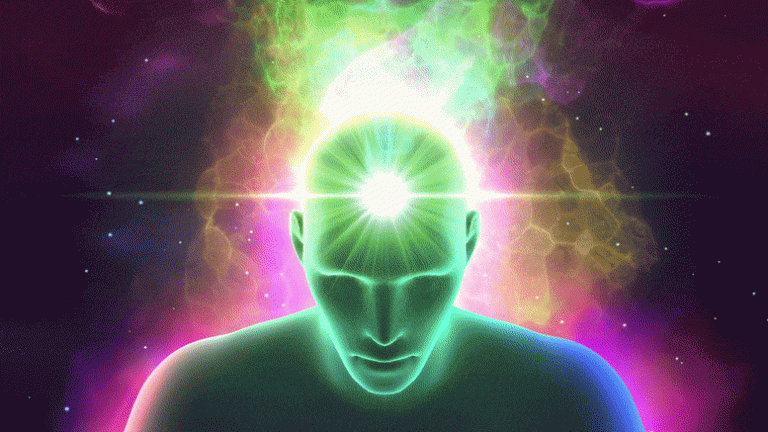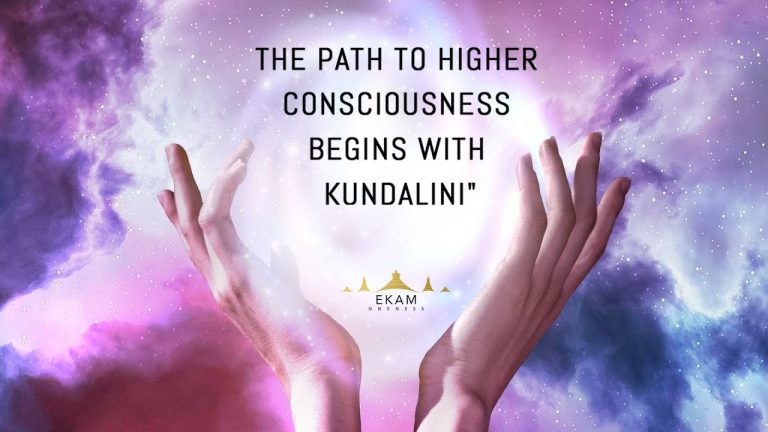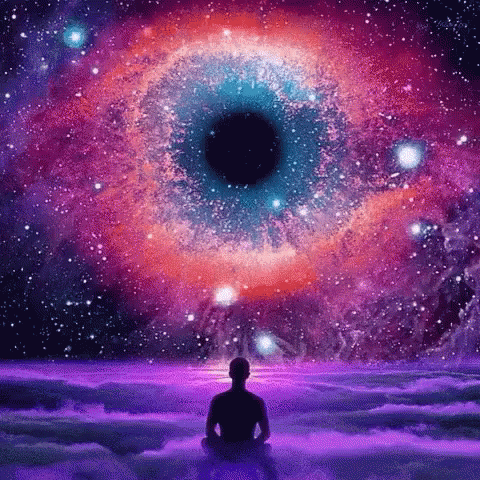
RADIATING POWER – Sahasrara Chakra, beyond the elements
The sahasrara-chakra is called a chakra only for practical purposes. In reality it is not a “center” like the others. It is situated outside the body, in the spot where the axial line goes beyond the cranium. Since the body corresponds to the universe, the sahasrara-chakra, or the dimension of transcendence that is beyond the universe, is analogically located above the head.
SAHASRARA LITERALLY means”thousandfold,” and this chakra is depicted as a thousand-petaled lotus flower in full blossom at the crown of the head. The thou-sand petals of the lotus relate to the fifty petals found on the lower chakras (Muladhara—four, Svadhishthana—six, Mani-pura—ten, Anahata—twelve, Vishuddha—sixteen, Ajna—two), multiplied by twenty. Each petal of Sahasrara chakra represents a nadi, through which prana is drawn in from the universe. Sahasrara directs prana into Ajna chakra, where it is combined with karma and the elements and distributed through all of the other chakras to be used in life.
To the ancient yogis, the thousand petals of the lotus signified a number beyond counting: the infinite. Sahasrara is where Shakti first split from Shiva to give birth to consciousness, and it is to Sahasrara that she desires to return. As each of the lower chakras balances and you remove the avidya and karma that keep you trapped in the material world, Shakti gracefully moves up the spine to reunite with Shiva at the crown of the head. With this union in Sahasrara, one can experience samadhi, the bliss of the infinite world beyond life and form. Sahasrara chakra, like Ajna, is beyond the considerations of the body. It opens when all of the other chakras are in balance, and it remains closed when one is caught up in the illusory world of maya. Sahasrara is located between your hairline and the place yogis call bindu (at the back of the crown of the head).
When Sahasrara is open, your skull plates feel relaxed and there is a light-ness at the top of your head. Sahasrara is like a screen of conscious-ness onto which all of the other chakras project—just like the screen at a movie theater. When you watch a film, it is so easy to get caught up in it emotionally. No hours go by, during which everything you watch seems like reality. Then the movie shuts off, and all that remains is a blank screen. The entire experience was an illu-sion brought to life by a movie projector and your imagination.
The goal of yoga is to clear Sahasrara’s screen so that pure consciousness can re-flect clearly and not be obscured by the illu-sions of maya. The second yoga sutra, Yogas Citta Vrtti Nirodhah, explains that yoga happens when consciousness (citta) is re-leased (nirodhab) from disturbances and movement (vritti). When the screen of the mind (citta) is clear of thought and distur-bance (vrtti nirodaha), Shiva’s inspiration and knowledge floods your being; Shakti is refreshed and replenished and can bring Shiva’s wisdom and intelligence (prajna) into life.
The first step toward clearing the mind is to practice asanas and bring balance to the physical body. Asanas help to lessen the mind’s fluctuations (vritti) and releases karmic patterns (samskaras) that have be-come locked in the body. At the end of each asana practice, it is important to execute one final pose, called Savasana. Savasana is considered one of the most healing asanas, be-cause it allows you to completely integrate your yoga practice and further relax and balance of each segment of your body. As you go through Savasana and focus on re-laxing each body part, you stop the electrical impulses to the specific area of your brain (located within the somatosensory cortex) that is associated with that body part, and your mind becomes still.
What yogis have intuitively known for thousands of years is now scientifically illustrated by the figure of a little man called homunculus. Homunculus is a figure that is superimposed on the surface of the brain to show the distribution of the various motor or sensory regions of the body. Each region of the body is represented by the density of touch receptors located there (not by its ac-tual size), so areas that are dense with recep-tors—such as the fingertips, lips, tongue, and feet—appear proportionately larger than areas with fewer receptors, such as the torso or legs. The little man has big feet and hands, huge lips and tongue, and a small torso and legs. The yogis have taught Savasana as a way of relaxing each body pan, with particular attention paid to the areas that are dense with receptors. Once relaxation is achieved, the brain ceases all superfluous activity and you can experience complete surrender.
The uncoiling of the coiled central force is an extraordinary occurrence in the human mind and body, in thoughts and actions. It is like a flood of splendorous divine force from which is being released a new form of consciousness which is not modified by what is called matter at all its levels, and is not dependent upon the mind which mentalizes consciousness. Because of the coiling, this latent central force is called Kundalini. But the meaning of coiling or Kundalini is much deeper than its superficial significance, ‘latency’.
Kundalini is in 31/2 coils in the muladhara, in 8 coils, one coil in each of the eight chakras, in 31/2 coils in the sahasrara and in 31/2 coils beyond sahasrara. The first uncoiling of Kundalini takes place in the muladhara. Second, the uncoiling of the eight-coiled Kundalini, third the uncoiling of the sahasrara Kundalini, and finally Kundalini beyond sahasrara takes place. The uncoiling is the process of dynamization of Kundalini occurring in four stages. When Kundalini is uncoiled it becomes the sole dynamism. This dynamism reaches a stage of bodilessness and mindlessness and again becomes static in the form of infinite, whole supreme consciousness. Kundalini as Kulakundalini is in 31/2 coils in the muladhara. The 3 coils indicate that Kundali-energy is latent in the material, nadi and mental fields, and the half coil shows that Kundalini is in a static form. One coil in each chakra indicates that the chakra is inactive and dark, and its powers remain unmanifested.
Sahasrara then is everything and nothing. When Shiva and Shakti unite, nothing remains. Shakti is no longer Shakti, likewise Shiva is no longer Shiva. They are no longer two individual identities. They fuse into one. Many traditions, religions, and philosophies have described this experience in their own way. Some call it nirvana, others kundalini, samadhi, self-realisation, enlightenment, communion, and so forth. In the ultimate union, there is no “I” or “you” or “they”; rather the experience, the experiencer, and the experienced are the same. At such a level, intellect makes way for experience and knowledge. At sahasrara, the possibility of space and time is boundless. There are no restrictions set by previous patterns and convention. No wonder seers and sages have described this experience as bliss.
It is a very privileged place for you to enter, into the Sahasrara of the Virata (The Cosmic Whole), to reside in the brain as cells of Sahasrara. These are specially created cells through the working of the Swadhisthana. Passing through all the chakras, when they arrive at Sahasrara they are equipped to handle the brain’s activity without getting involved with other elements in the body. The first thing that happens to a Sahaja Yogi at the Sahasrara level is that he becomes `Beyond’, (Atita). He transcends so many things; he goes beyond time, (Kalatita). Time is his slave. If you have to go somewhere then suddenly you discover that everything is working at the same time when you are able to do it. Like you are, say, to catch a train and you arrive late at the station, you find the train is late for you. Things work out in such a way that you feel they are all active for your complete convenient to go beyond time that is kalatitia.
Since the location of sahasrara is beyond the physical body, it is not, in fact, a chakra. It is the culmination of the yogic process and the crown of expanded awareness, signified through the 1,000 petals. It is Brahman—represented by shoonya (void)—nothing and everything. Transcending all concepts, it is, nevertheless, the source of all concepts. The arrival of kundalini at sahasrara marks the union of Shiva and Shakti and the beginning of samadhi, that is, Self-realization. Between ajna and sahasrara is the experience of death, absolute nothingness or shoonyata (void), and the merging of the seer, seeing, and seen. This is Nirvana, enlightenment, nirvikalpa samadhi, Self-realization, or the kingdom of God. It is supramental awareness, awareness of one’s own Self as God.
